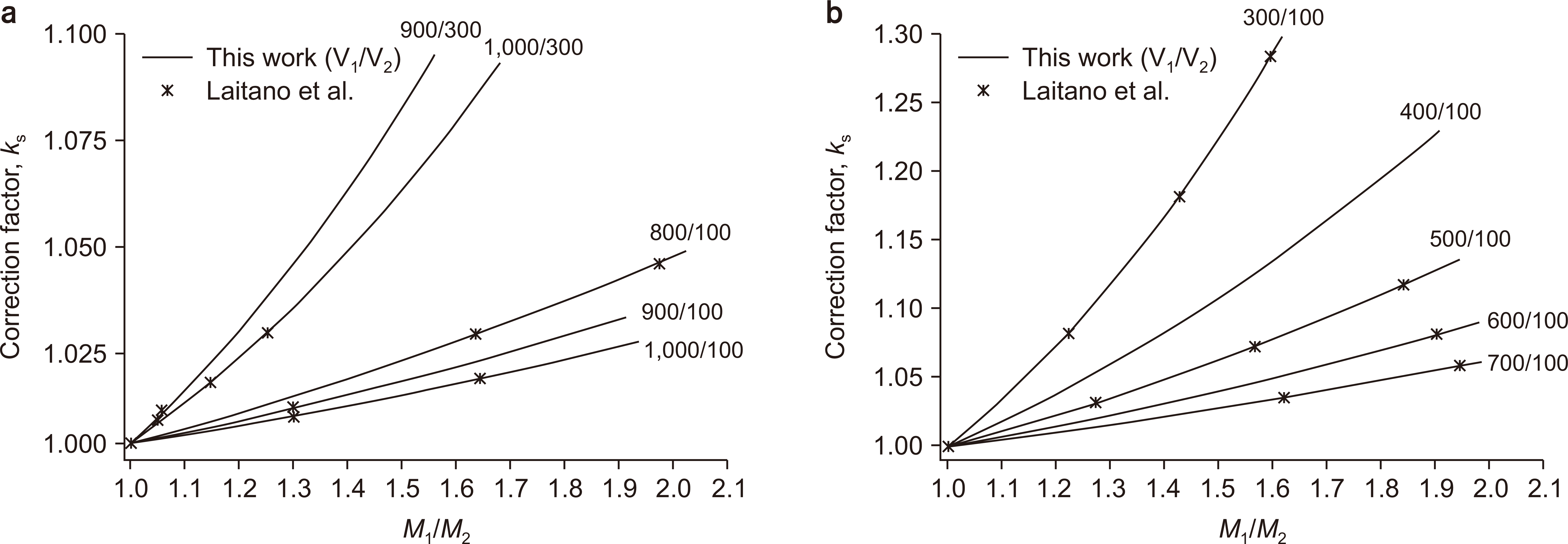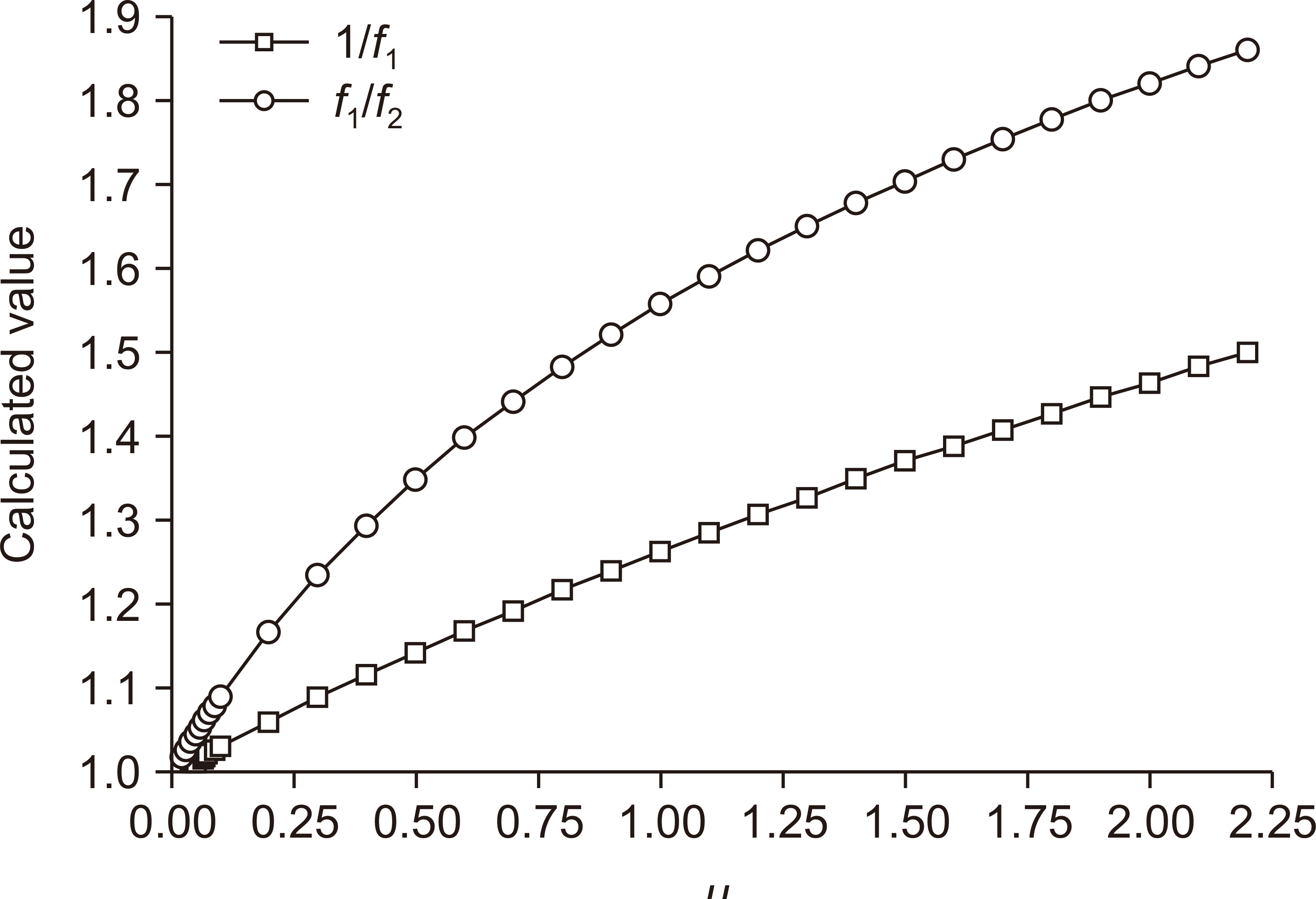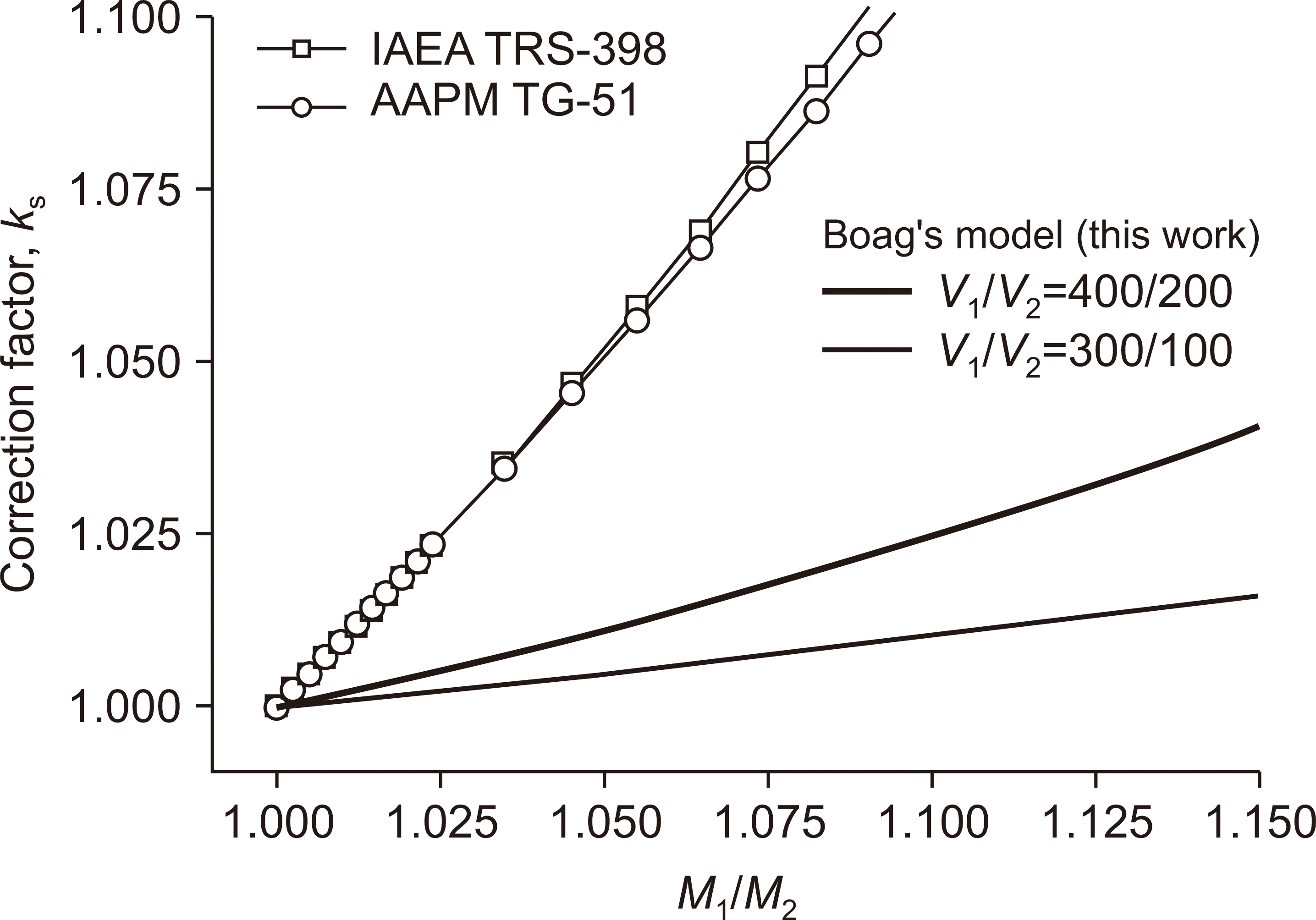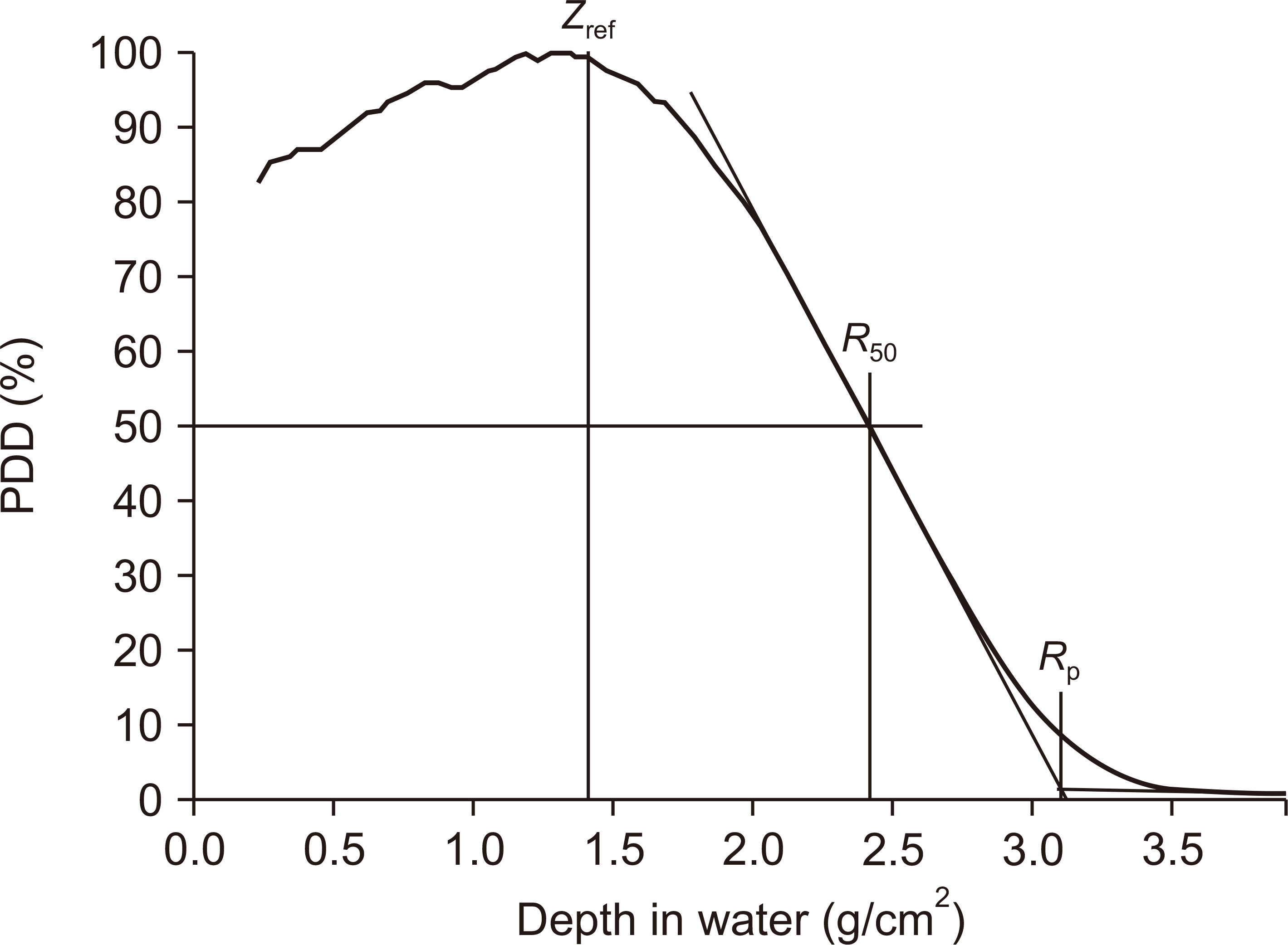1. Ion-recombination correction
The ion-recombination correction factor is used to correct the response of an ionization chamber for the lack of complete charge collection, which is due to the recombination of ions exhibiting opposite charges during transit to each electrode. For positive ions, the ion-collection efficiency
f is given by the ratio of the collected charge
M to the total charge produced,
M0:
f=
M/
M0. Then, the ion-recombination correction factor is defined as
ks=1/
f [
6,
10].
Because interactions between the ions themselves—or between ions and neutral molecules—in an electric field are complicated, determining
f or
ks exactly is difficult, so
ks is currently obtained from empirical formulas [
10]. In the IAEA code of practice (the TRS-398 protocol) for pulsed radiation beams, the ion-recombination correction factor
ks is given by [
11]
where
a0,
a1, and
a2 are constants that depend on the ratio
V1/
V2 of the two polarizing voltages. For
V1/
V2=2, the values of the constants are
a0=2.337,
a1=–3.636, and
a2=2.229. The quantity
M1/
M2 is the ratio of the charges measured at the two polarizing voltages
V1 and
V2. Similarly, in the AAPM TG-51 protocol, the ion-recombination correction factor
Pion (=
ks) is given by [
12]
Both of these methods are based on Boag’s early model (1950), which assumes a linear dependence of 1/
M on 1/
V [
11]. According to that model, the correction factor is determined by extrapolating the 1/
M vs. 1/
V plot to determine the value 1/
M0 obtained when 1/
V=0, where
M0 is the saturated charge for which
f=1. By estimating
M0, one can thus obtain the ion-correction efficiency
f=
M1/
M0 or the ion-recombination correction factor
ks=
M0/
M1 [
13].
The quantity
f declines from 1 to 0 with increasing DPP, and for clinical electron beams (DPP<1 mGy), the recombination correction factor can be determined using the current methods that apply the dosimetry protocols of the IAEA and AAPM. However, because free electrons that do not contribute to the production of negative ions increase with increasing DPP, eventually the value of
f does not continue to decrease significantly. Thus, the current methods are not appropriate for cases with high DPP, especially DPP>20 mGy [
6,
7].
Therefore, in order to incorporate free electrons into the determination of the ion-collection efficiency, Boag proposed three improved models, where the third model (denoted by
f''') was introduced as a practical correction method for high-DPP electron beams [
6]. The ion collection efficiency (
f’’’) in Boag’s third model is given by [
6]
where
λ=1√1−p,
p is the free-electron fraction of the total electrons produced by a beam pulse, the dimensionless parameter
u=µ
rd2/
V, where µ depends on the ionic recombination coefficient and the ion mobility,
r is the charge density of positive ions initially generated by the beam pulse,
d is the electrode spacing, and
V is the polarizing voltage [
6,
7].
Equation (3) cannot be solved directly due to the difficulty in determining the parameter u. However, if f1 and f2 are the ion-collection efficiencies for the charges M1 and M2 measured at the two polarizing voltages V1 and V2, respectively, then the ratio f1/f2=M1/M2 can be expressed a function of u1 by using u1/u2=V2/V1:
Then, one can determine
u1 iteratively using a computer program and the measured value of
M1/
M2. The correction factor
ks=1/
f1 can be determined by substituting the resulting value of
u1 into the expression for
f1. This is the method proposed by Boag et al. (1996) [
6] and implemented by Laitano et al. (2006) [
7]. However, although this method can be used to determine
ks, applying in practice is inconvenient.
Conversely, because the single variable u1 determines both M1/M2 and f1 simultaneously, the correction factor ks=1/f1 can be determined as a function of M1/M2 without iteration by utilizing pre-calculated values of M1/M2 and f1 as functions of u1. Thus, the quantity f1 can be obtained as a function of M1/M2 for practical use by fitting. Our study used this new method with the new equations based on the Boag model, to measure high-DPP electron beams produced by an electron LINAC.
3. Electron-beam measurements
To determine the reference dose in water at source-to-surface distance (SSD)=100 cm, we performed dosimetry for electron beams from a 6 MeV electron LINAC using an Advanced Markus
® ionization chamber, as shown in
Fig 1. The electron LINAC used in this study is the prototype developed by the Dongnam Institute of Radiological and Medical Science in collaboration with the Pohang Accelerator Laboratory [
14]. Because the electron energy depends on the heating current of the electron gun, this experiment was performed at about 6 MeV by adjusting the heating current [
15].
 | Fig. 1Experimental setup (a) for reference dosimetry using an Advanced Markus® chamber and (b) for percentage depth dose measurements using a radiochromic film in water. LINAC, linear accelerator. 
|
An electron-irradiation device was used for the electron-beam irradiations, as shown in
Fig. 1. It consists of specially designed scattering foils and collimators to generate an optimal electron beam for FLASH preclinical studies. We do not discuss its detailed geometry in the present work because the irradiation device is still under study.
The ionization chamber was calibrated in terms of water equivalents using a Co-60 reference beam. We applied the TRS-398 protocol to determine the dose in water [
11]. The reference point of the ionization chamber was positioned at
zref=0.6
R50−0.1 cm, where
R50 is the half-value depth in water [
11]. In this work, we determined
R50 by measuring the percentage depth dose (PDD) curve using a radiochromic film. The ionization measurements were performed at polarization voltages of 400 V and 200 V for 100 electron-beam pulses at the repetition rate of 50 Hz using pulse-mode control of the pulse-modulator system [
16]. We applied the values of
ks calculated with the new method to correct the measured charge, and we also applied environmental and polarity corrections according to the TRS-398 protocol [
11].





 PDF
PDF Citation
Citation Print
Print







 XML Download
XML Download